We will take a journey through time to explore the incredible evolution of fashion and uncover how it has been shaped by climate, geography, resources, and societal change. From prehistoric clothing to today’s popular looks that reflect our culture in every stitch, garments are more than just material: they open up a window into history!
As we unravel the threads between past styles and present clothing, let us discover how fabrics, techniques, and timeless silhouettes have formed dress codes throughout generations as well as creative expressions across cultures.
Key Takeaways
- The evolution of fashion has been shaped by climate, geography, and available fabrics throughout history.
- Social media has increased accessibility to fashion while sustainability is becoming a priority for brands and consumers alike.
- The future of fashion lies in balancing style with responsibility to meet the needs of our changing world.
The Dawn of Clothing: Prehistoric Attire

Tracing the roots of human clothing, we are taken back to ancient times, a time when people donned animal skins and plant-based items as ornaments. Clothes were not solely used for shelter from tough climatic conditions. Rather, they symbolized moral beliefs in tandem with customs within these primitive societies.
As their livelihoods expanded, so did complexity and diversity in apparel craftsmanship that included using animal skin made from all types of animals – all components eventually molding today’s fashion industry.
The discovery of twisted cotton fibers recorded as the earliest evidence of attire across India along with ancient materials recovered inside caves has aided our understanding of prehistoric garments.
These revelations offer an extraordinary view into past life which demonstrates how imagination and invention have been entwined during prehistoric development and the evolution stages involved in creating clothes since antiquity.
Paleolithic Clothing
Prehistoric fashion dates back to the Paleolithic era and early humans such as Neanderthal man, who crafted clothes using animal hides, fur or fibers. Loincloths, tunics, hats, leggings, and shoes were all necessary for protection from Ice Age climates.
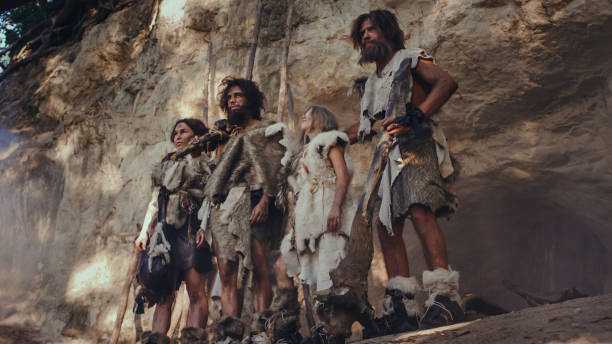
These basic clothes signified a steppingstone in the advancement of clothing over time as Cro-Magnon man developed them with limited resources at his disposal. This milestone speaks volumes about human resilience and creativity – what began then years ago has flourished into today’s diversity of vibrant modern-day fashions.
Neolithic Period
During the Neolithic era, an impressive revolution in textiles and clothing occurred. From the early discovered of dyed flax fibers from 36000 years ago to the cultivation of flax plants and sheep breeding around 8000 BC and 3000 BC respectively, humans made huge leaps forward with their style of dress. This development spread worldwide – evidenced by 8-thousand-year-old weavings of clothing found at Guitarrón Caves in South America, which showed remarkable skill akin to that seen during Ancient Rome. Luxury textiles were traded along the Silk Road as a form connecting East Asia with Europe through cultural exchange.
Such advancements during this period set up exciting possibilities for subsequent clothing moving forward into history!
Ancient Fashion: Influences and Styles
The creativity and invention of ancient fashion provided us with a variety of clothing, materials, and choices that stemmed from multiple sources including climate conditions, location factors as well and the materials accessible to distinct cultures.
From the 5th century BC Chinese silk robes for example, or even Indian wool were mentioned by Herodotus as being superior in beauty compared to sheep’s wool. These stood out among their respective civilizations due to a combination of reflective beliefs along with decoration.

To Explore specific attire such as in Egypt, Greece Rome, etc. it is vital to consider how costumes were more than just an art form but rather gave insight into cultural values back then, allowing modern-day inspirations over various time periods!
Mesopotamian Clothing
Ancient Mesopotamia, considered to be the birthplace of civilization, had clothing created from wool and calfskin due to the resources in this area. Since climate was a major factor determining fashion at that time, men usually wore short skirts and tunics while women sported long dresses which reached their ankles.

The costumes of those with high social standing featured elaborate weaving designs as well as intricate decorations serving not only aesthetical purposes but also demonstrating respect for societal norms. From everyday clothes worn by simple folks up to luxurious gowns donned by royalty, all kinds of garments depicted unique aspects of the cultural lifestyle prevalent during Ancient Mesopotamian times.
Egyptian Attire
Ancient Egyptians are renowned for their exquisite architecture and artistry, as well as having left an indelible legacy in fashion. Necessitated by the climate, lightweight clothing made of linen or silk was common among them.
All styles reflect social standing with garments ranging from humble to extravagant. The intricate leather craftsmanship present in this society’s costumes is still inspiring modern fashion today – one that takes into account aesthetic beauty along with environmental sustainability and ethical considerations when choosing what to wear.
Greek and Roman Garments
The clothing style of ancient civilizations was shaped by climate, geography, and material availability. The Greeks typically wore creations such as chitons and peplos crafted from wool or linen that could be draped loosely over both men’s and women’s bodies.
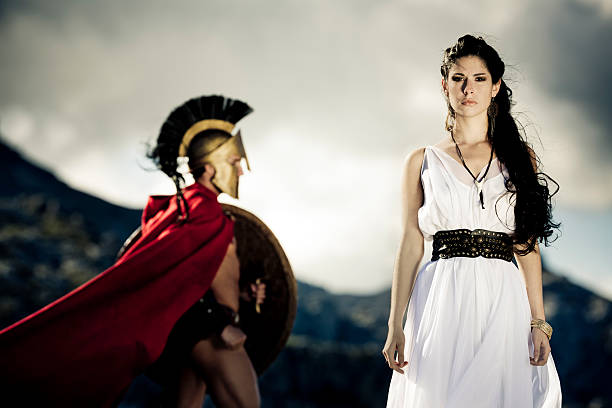
To this, Roman attire showed a greater indication of social status with upper-class men wearing sophisticated clothes made out of luxurious materials like silk or wool fabric which required more complex constructions for their outfit designs. Ultimately all these influences had an effect on fashion in antiquity leaving it with signature impressions carried across ages through its individual cultures’ clothing choices between being worn comfortably free-flowing versus opulent formality highlighting one’s wealth level depending upon what civilization you were partaking in.
Medieval Apparel: From Practicality to Luxury
The clothing during the Middle Ages evolved greatly, dependent on one’s social class and geographical region.
Early on in this period, fashion was simple and utilitarian but grew to be more intricate with richer materials as time progressed due to increased trade across Europe. These later creations were a show of wealth while also embodying society’s beliefs through their designs.
The popular looks seen throughout medieval fashion mirrored their culture. It wasn’t only an expression by those who wore them, but rather a representation for all citizens from the Middle East the early Middle Ages until late into that era.


Early Middle Ages
During this period, clothing was more straightforward and practical. Men wore knee-length tunics that cinched at the waist with a belt while women draped themselves in long dresses which reached their ankles. The materials used to craft these clothes – wool or other locally available fabric – speak volumes about how resourceful people of this era were despite its challenges. They managed to adapt and draw inspiration from the cultures around them. This period was marked by creativity when it comes to fashion as our predecessors laid the foundations for what would later become major looks in modern times today.
High Middle Ages and the Rise of Fashion
The High Middle Ages marked a period of remarkable progress in fashion and clothing, with the upper classes embracing luxurious materials such as velvet and silk. As cultural exchange enabled increased connectivity across the world, distinct garments from regions like Byzantium to Europe started appearing in local wardrobes.
The emergence of mass production of these new garments signified wealth but also exemplified functional practicality for those who couldn’t afford finer materials. A time where looks evolved rapidly due to transnational influences ultimately led to an era that revolutionized style throughout society at large.
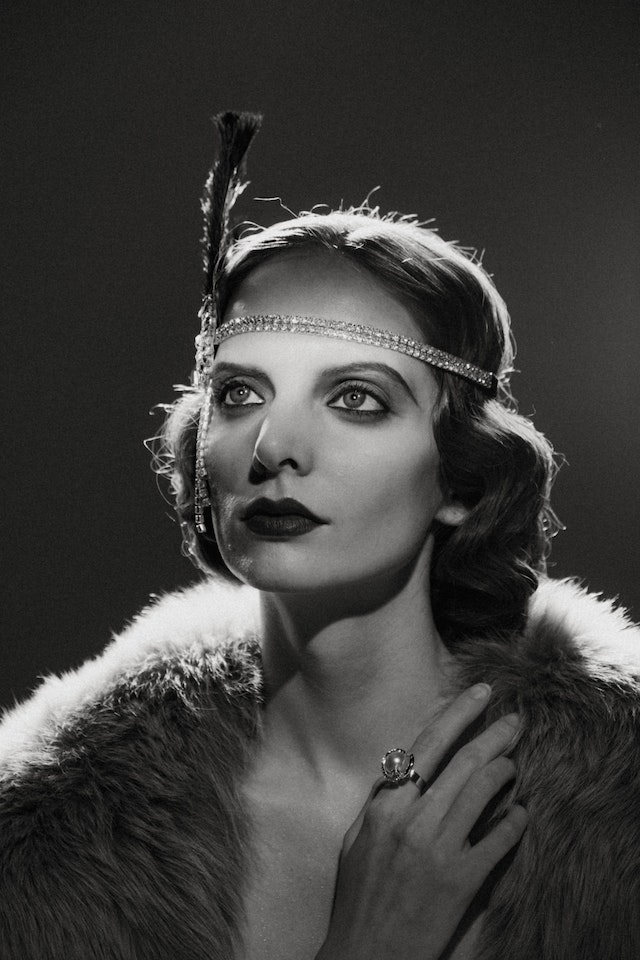
Fashion Through the Centuries: 18th to 20th Century
The Metropolitan Museum allows us to observe the various fashions and clothing styles that have shaped human history over centuries. From the opulent Rococo era of luxury textiles through to modern designs in the early 20th century, each time period is showcased in national museum with its own distinctive values reflecting important social changes throughout our timeline.
In the 18th and 19th centuries, we see a major shift during the Industrial Revolution which led to sophisticated menswear creations alongside elaborate women’s garments accompanied by fashion magazines showcasing fashionable content. The 20th century was marked by vintage touches as well as the emergence of new textile manufacturing techniques creating unique pieces on demand.
Overall, when exploring this great wealth of apparel options at The Met, we gain deeper insight into how clothing expresses different eras – fully immersing ourselves in past moments just like an eyewitness!
Rococo and Georgian Fashion
Evidence suggests that the Rococo and Georgian eras, with their intricate menswear, lavish womenswear, and popular fashion magazines, had a major force lasting impression on modern fashion. This was due to new advances in textile production, which made clothing more accessible for all classes.
Designers were inspired to make new collections and create inventive designs from various materials. We can see reflections of these periods’ society within its styles, be it regal French or country English aesthetics, something timelessly captivating even today! Evidence hints at this remaining influence as we look back through history’s ever-evolving looks.
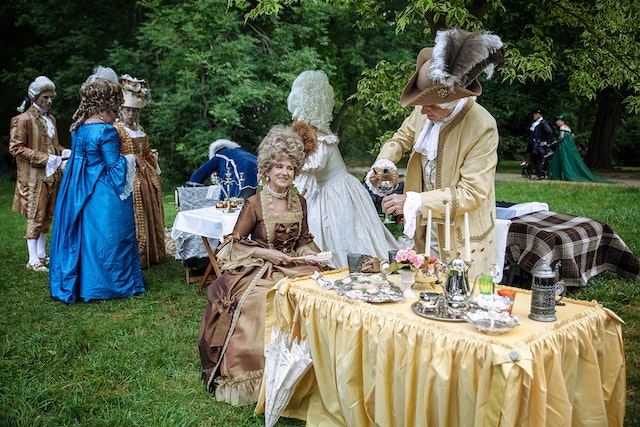
Victorian and Early 20th Century Fashion
The fashion worn throughout the Victorian period and beyond to the dawn of the 20th century was intricately linked with ongoing social transformations. This age, synonymous with sophistication and splendor, gradually gave way to pioneering styles that mirrored emerging cultural values at this pivotal time in history.
From form-fitting garments laden with lavish details during Queen Victoria’s reign to more relaxed designs rich in color from the 1920s onwards, clothing has been a vehicle for articulating identity while also influencing how we view the environments around us. Examining these historical shifts helps cultivate an understanding of just how powerful apparel can be when it comes to altering societies as well as establishing personal identities today.
Modern-Day Fashion: A Blend of Vintage and Innovation
Fashion in the modern-day world is an ever-changing field, which derives influences from aspects such as culture and technology. By blending together old styles with up-to-date designs, a whole spectrum of fashion evolution is created. One significant example is fast fashion.
Style not only symbolizes self-expression but also demonstrates our society’s values and beliefs. Social media heavily affects current style tendencies while attention towards eco-friendliness grows – demonstrating how we try to conjoin beauty with sustainability when taking ethical matters into consideration.
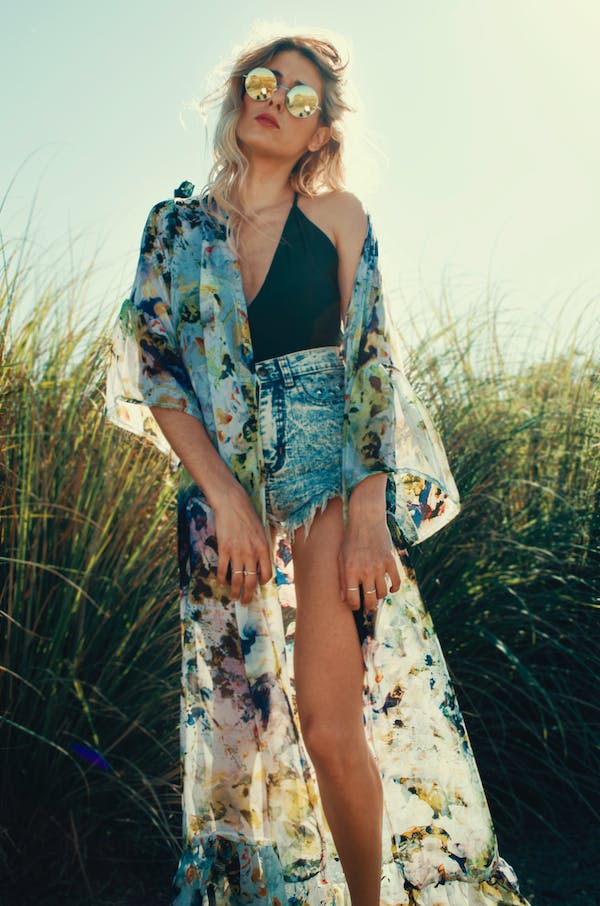
The Role of Social Media
Fashion has been strongly impacted by social media, with Instagram, Facebook, and Pinterest allowing us to explore trends from all over the world. Our own unique styles can now be shared on a global scale thanks to these platforms which have democratized fashion. Social media also provides brands with an effective way of marketing their products.
They are able to expand their reach more than ever before while targeting certain consumer groups through customized messaging – ensuring that both customers and businesses stay up-to-date and well-connected in this competitive market space. The tools made available via networks such as Instagram or Pinterest become invaluable for any fashion label hoping to make its mark in today’s society!
Sustainable and Ethical Fashion
In recent years, many fashion brands have been recognizing the need to prioritize sustainable and ethical practices in their production. This has involved utilizing eco-friendly textiles as well as creating transparent supply chains that are more conscious of environmental impact and workers’ rights. As consumers become ever more aware of these considerations when it comes to clothing choices, there is a burgeoning demand for responsible garments from an industry perspective which can drive long-term positive change globally.
We must find a balance between sustainability factors and stylishness so that even trendy trends maintain both ecological integrity and ethics throughout manufacture right through purchase.
The Future of Fashion: Balancing Style and Responsibility
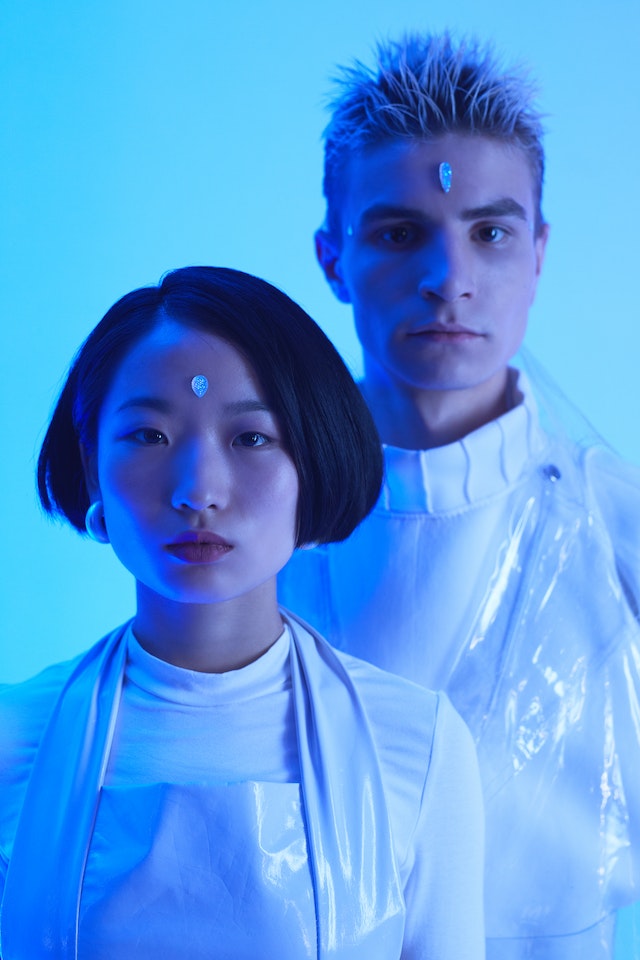
The fashion industry has an exciting future ahead of it, one that requires a commitment to creativity and innovation. As the world continues its rapid evolution, so must those in this space – with an increasing focus on sustainable materials and practices alongside leveraging social media trends for inspiration. Going forward, we have to strive towards connecting style with responsibility. Something can be achieved through technological advances as well as helping ensure ethical production is standard practice throughout the entire sector.
By utilizing all aspects from both past experiences but also embracing new advancements, fashion will continue creating products that are beautiful yet conscious, which leads to brighter outcomes globally.
Summary
Fashion has been an ever-evolving expression of cultural values, beliefs, and experiences faced by humanity. From primitive clothing to modern ensembles, each era’s fashion demonstrates creativity and resilience in adapting to changing needs.
As we move forward into our future with style as a priority, the industry must reflect upon the past while striving for a balance between aesthetics and sustainability alongside technological advances such as social media. The journey ahead offers an opportunity for growth where beauty can be responsibly created setting a better precedent now than before, creating sustainable apparel solutions that generations after will appreciate.
Frequently Asked Questions
Which clothes from the past are back in fashion?
This year, clothes from the past are having a resurgence in fashion. Everyone is wearing high-waisted jeans with shoulder pads, bucket hats, and mini skirts made of corduroy or printed blouses paired with flares and tiny sunglasses.
Fashionistas everywhere have embraced these iconic styles as statement pieces to wear to give their wardrobe an extra dose of nostalgia while looking stylish at the same time! These classic looks provide anyone the perfect opportunity to express themselves in new ways for any occasion without missing out on that vintage feel.
What is your definition of fashion?
Fashion is an established way of dressing, acting, and interacting that can depict a person’s social standing and provide the body as a means for self-expression as well as social relationships.
It encompasses the design of clothing including shoes, jewelry, and accessories from different cultures which are combined to put together outfits. Thus fashion relates not only to the style most clothing one wears but also to how one presents oneself in society.
What materials were utilized for clothing during the prehistoric period?
Prehistoric people created clothing from animal hides, skins, and vegetation for various reasons. Not only did they do this to protect themselves against the elements, but also as a way of demonstrating their identity within the community or establishing their social standing. To shield them from outside forces, these materials were used by early humans in order to keep warm.
How has popular culture, technology, and sustainability impacted modern-day fashion?
The evolution of modern fashion is due to the combination of popular culture, technology, and sustainability. These influences have created a unique blend of classic and contemporary clothing designs that are environmentally friendly as well.
Today’s customers now have access to stylish yet sustainable apparel which offers them endless possibilities when it comes to creating their own individual look with different materials, styles, and trends being reimagined from traditional sources for an updated version.
How does social media influence fashion trends?
Fashion trends have been impacted significantly by the introduction of such tools and social media, which has enabled people around the world to rapidly spread styles and ideas. Through this tool, individuals also now possess more autonomy in developing their own individual looks and expressing themselves through style.